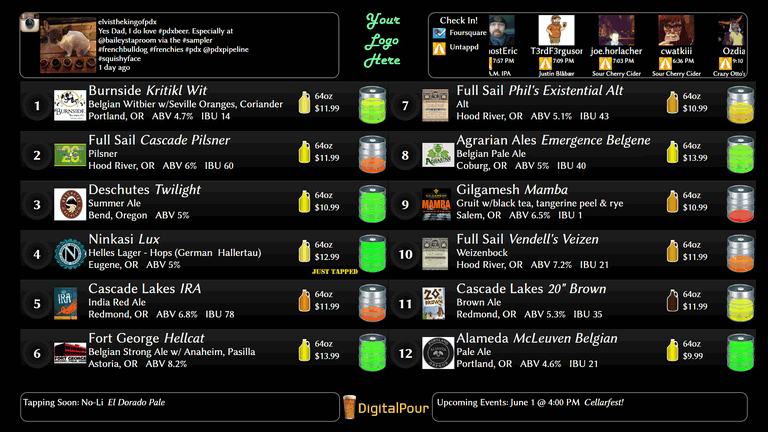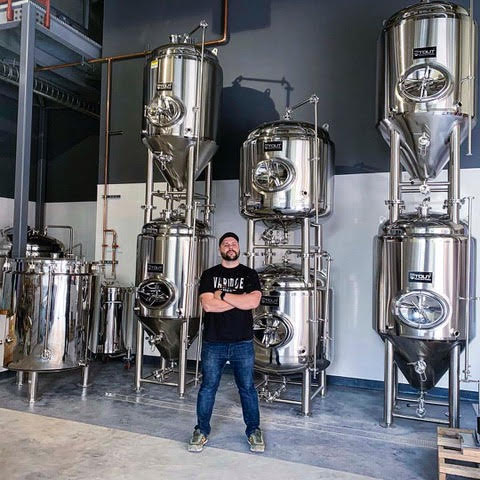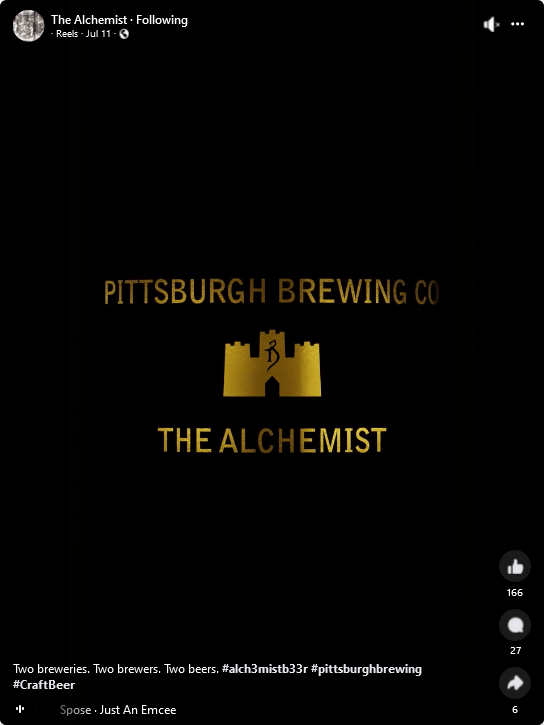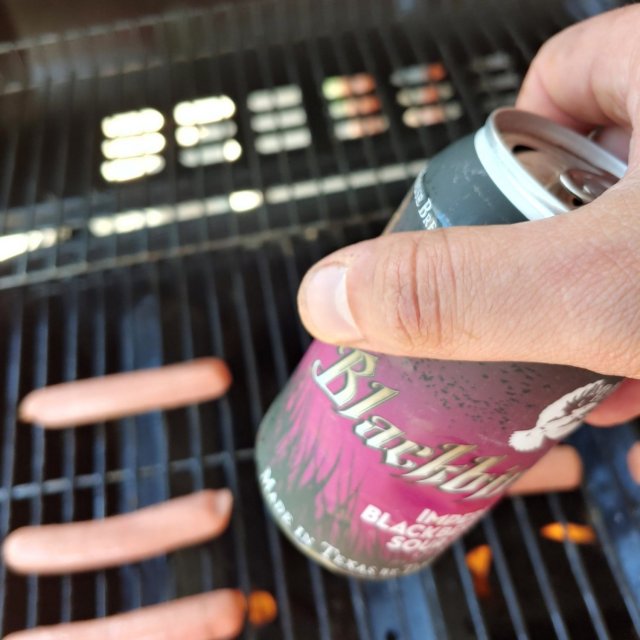MICET Group: Fully Automatic Brewing System

Fully Automatic Brewing System
Quick Links:
Why you need an automated brewing system?
There are more and more options for automated brewing systems on the market. MICET’s
range of Intelligent Design, ease of use and customizability will make brewing super fun and
efficient. You’ll love brewing with this high-quality and great-looking technique.As much as we
love brewing beer, but we also understand that not everyone is eager to uncover every detail of
the brewing process. The key is use automated systems to produce quality beer.
The less automated the system, the more you need to do yourself. This could be adding
grain, adding hops, putting the beer in a fermenter, or filling it in a keg or bottle. So automated
systems can reduce a lot of labor during the brewing process. A fully automated system will
basically do it all for you. You only need to press a few buttons.
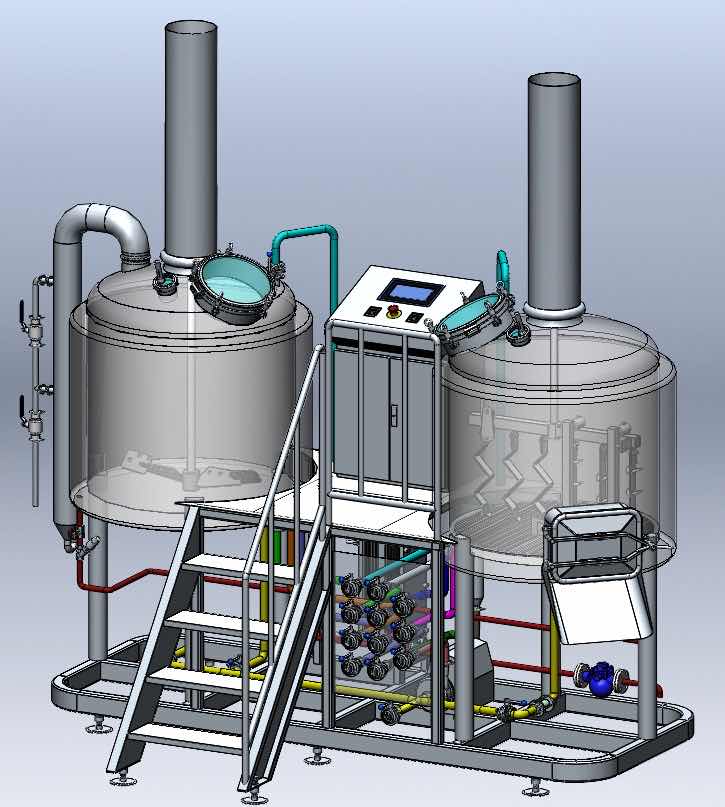
Does automatic brewing system cost high?
Many people believe that an automated brewing system will be a huge investment.
Actually the automation of micro breweries is very different from the automation of large
breweries. It does not require a large investment, because only the necessary automation
processes are automatically designed, not all. Due to the reasonable introduction of automation,
equipment with a high level of automation not only ensures the brewing fun of brewers, but also
free up a lot of time and energy. There are several automatic levels of brewhouse depending on
the size of brewery equipment for your options, including semi-automatic PLC control system
and fully automatic PLC control system with remote control.
What function does automated brewhouse can realize?
The main function will realize through pneumatic butterfly valve, regulating valve, temperature
sensors, flow sensors, liquid level sensors, and other measurement and control hardware, with
the software programming control program of Siemens PLC, can realize continuous and
automatic brewing.
Mash tun: Mashing temperature, multi-stage temperature control parameters, and mixing speed
can be pre-edited. According to the different requirements of different beer on the mashing
process, the brewing formula can be input, and the temperature control parameters can be
automatically loaded by clicking the formula.
Lauter tun: All lautering process parameters such as feeding, static, reflux, filtration, sparging,
water flow, etc. can be set in advance. The speed of the tiller and the height of the tiller can be
automatically controlled by the turbidity sensor.
Boiling: Set the boiling process parameters in advance, including the boiling start time and end
time, configure the hop filler to put the hops in advance, and automatically add the hops
according to the set time. MICET design with high advancement and stability, and can realize
continuous mashing production (one batch of wort every 3 hours).
Whirlpool, wort cooling and water control: Can set cooling parameters of wort, after complete
wort cooling, the wort enters the fermentation through the heat exchanger for automatic
temperature control, cold and hot water can realize automatic liquid level control and automatic
valve to add water.
What advantages does Micet Group fully automatic brewing system have?
1) Automation level can be selected
Each equipment is equipped with the reasonable collocation and process connection, and
reasonable automation (although the automation can be infinitely improved, it is recommended
that each customer choose the degree of automation according to their own conditions, such as
the most core and The important production process is fully automated, and the auxiliary labor
intensity is not high, and manual assistance is also a good choice).
2) Visualization of brewing recipes and automatic brewing procedures
This process can set brewing formula parameters, controls the feeding process, and will
automatically adjust the water temperature, water speed, etc., so as to better mix the material
and water; when the process is over, stop the relevant actuators, and there will be related
sensors and inverters to protect the process.
3) Segmented leaching brewing
Most brewers hope to achieve segmented leaching brewing, but for small equipment,
saccharification and filtration are mostly integrated. Due to the existence of rake knives, electric
heating pipes cannot be installed. Therefore, if you want to achieve staged brewing, steam
heating is the most commonly used method.
4) Save labor while maintaining stable beer quality
It can realize the production of any beer types and is easy to operate, as long as there are
formulas and process parameters, which solves the problem that high-end brewers are hard to
find, and also solves the problem of high labor costs in the production process.).
5) Easy for brewery expansion
With high scalability, the brewhouse equipment pipeline and control system constitute the core
of efficient and high-quality production, and the power system provides sufficient supply. In the
future, the production capacity can be expanded only by increasing the number of fermentation
tanks.
6) Off-site monitoring and remote access
With the site manager installed on your phone, no need for on-site monitoring during the
fermentation process, we can use the mobile phone to remotely monitor and understand the
progress of fermentation in real-time.
In this case, the brewer’s time is greatly liberated. When you are out, you can open your mobile
phone and check the real-time situation of your fermenters.
Here we mainly introduce the four-vessel brewhouse system, That is, mashing tank, lauter tun, kettle tun, whirlpool tank. Each processing unit has an independent pump/valve station with a complete pipeline inside, pneumatic butterfly valve, regulating valve, temperature Sensors, flow sensors, liquid level sensors, turbidity sensors and other measurement and control hardware, with the software programming control system of Siemens PLC, can realize continuous and automatic brewing.
1. Malt milling: For small systems, a pair of roller miller are mostly used, the outlet is directly connected to the material-water mixer, and the start-stop button of the miller is used as the program start signal, the temperature and flow rate of the water for mashing tank are set in advance, and the opening of the regulating valve and the speed of the hot water pump are automatically controlled by PLC.After mixing, the mixture is directly pumped by mash pump from the bottom of the mashing tank. After the milling process is completed,the system will automatically run the CIP flushing program when the miller is turned off.
Of course, for large-scale brewery equipment, it is recommended to use wet malt miller with grain case weighing.
2. Mashing tank: All steps can be edited in advance, such as preheating temperature, multi-stage temperature control parameters, stirring speed, opening and opening of steam valve during automatic operation, When the temperature rises, the stirring motor and the steam valve start at the same time. Stirring delay stops during heat preservation, and the liquid level is displayed. When the pumping mash process is about to end, the system will automatically add water add water to drain the remaining mash, it will stop the pump valve when the material is empty, and then automatically run the CIP program.
Finally, the interface prompts that the mashing process is completed, and the next batch of mash can be fed. You can edit the mashing formula according to the different requirements of different beer varieties on the mashing process, and click the formula according to your needs during production, the temperature control parameters can be automatically loaded.
3. Lauer tank: Set all process parameters such as water at the bottom of the tank, feeding, static, reflux, filtration, bad washing, and measurement in advance according to the process requirements.The lauter tank has been prepared with water works before the mashing tank is discharged, waiting for feed. All the water for paving and washing is automatically added through the flow setting, and the flow is adjusted according to the liquid level, and the filtration is completed in the shortest time. During this period, the rotating speed and height of the rake knife are automatically controlled by the turbidity sensor. After the filtration is over, the pump valve will be automatically closed and start discharging the grain , after that ,it’ll automatically run the CIP program.
4. The kettle tank: In the form of an internal heater, the wort can be heated evenly and form strong convection,Configure the deflector cap to form an umbrella-shaped spray surface to improve DMS volatilization. The boiling process parameters can be set in advance, including the start and end of the boiling, configure a hop filler, you can put hops in advance, and automatically add hops according to the set time. The boiling tank runs automatically according to the wort level, and automatically stops the pump valve and runs the CIP program after discharging.
5. Whirlpool tank and wort cooling: Set the parameters of feeding static time and wort pipeline, sterilization parameter setting, wort cooling parameter setting in advance, and association control with the boiling tank,set the feeding end time as the automatic start time, and 30 minutes before the end of the static time, the high temperature sterilization is automatically turned on. The program will automatically start high-temperature sterilization, starting from the wort cooling plate to the wort inlet pipeline of the fermentation tank, and returning to the hot water tank, then the wort goes through the cooling plate for automatic temperature control and enters the fermentation. During this period, the temperature and flow are automatically operated according to the pre-set parameters. Stop the pump valve and run the CIP program.
6. Brewing water tank and Hot water tank: The liquid level is displayed and controlled in real time, and the liquid level can be set to automatically control the valve to add water.
The temperature of the hot water tank has been maintained at 78-80 degrees Celsius, and the cycle time of the hot water automatic control pump can be set to make the temperature more uniform.The hot water pump and brewing water pump are automatically started while the mashing feed water and the lauter tank are washed and the bottom water is working.
7. CIP cabinet: The cleaning of hot water tanks, hot alkali tanks, acid tanks, all pots and tanks and the high temperature sterilization of the wort lines etc. are all configured and performed with the CIP station.
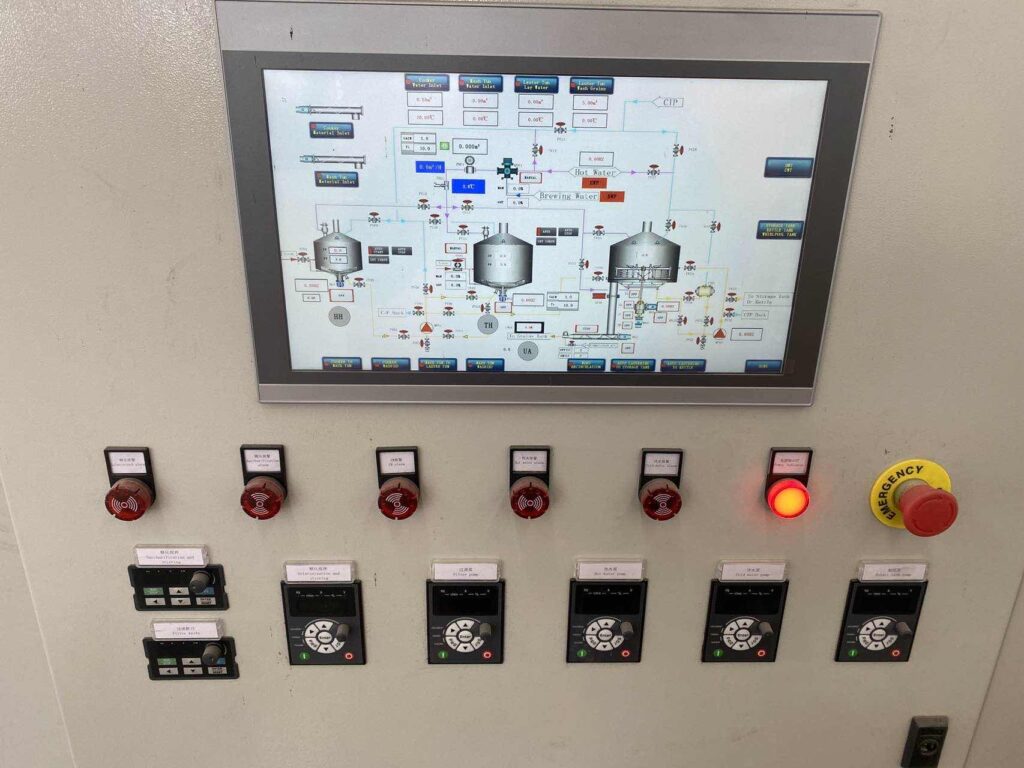
The mashing system is equipped with a CIP distribution jumper, which controls each channel separately; the fermentation system is equipped with a pump and a circulation pipeline to avoid conflicts with other cleaning. All pump valves, temperature and liquid level in the CIP station operate automatically according to the program.
8. Cold water tank and ice water tank: Real-time display and control of liquid level. The cold water tank is used to cool the mashed wort, refrigerate the brewing water to 4°C, and after heat exchange with the wort, it reaches 80°C then into the hot water tank for feeding&scrubbing, the ice water tank is used for fermentation, the refrigerant is ethylene glycol, the temperature is usually maintained at -4 °C, and the ice water pump will be automatically started by the program when the wort cooling and fermentation cooling work.
9. Fermentation tank: The temperature of the fermentation tank is controlled in two stages. After the wort enters the tank, you can set a separate temperature curve for each tank. After setting, click to run, and the system will automatically control the temperature and pressure according to the set value.
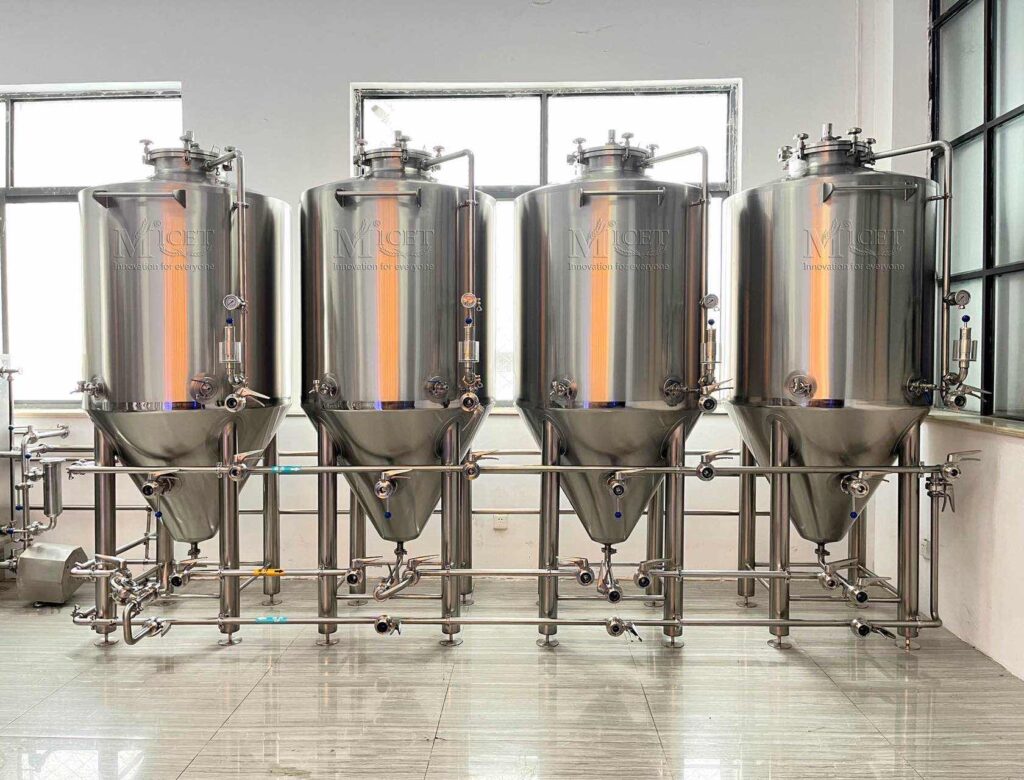
When encountering key nodes, it will be reminded to sample or wait for confirmation to avoid quality problems. The compressed air, carbon dioxide, wine inlet pipe, wine outlet pipe, CIP supply and return of the fermentation tank can be set independently. After the setting is completed, a pipe row is formed, and use a jumper to connect with the fermentation tank. When each tank operates independently, it will not affect the work of other tanks.(Example: tank No. 1 is feeding wort, tank No. 2 is pressurizing wine with carbon dioxide, tank No. 3 is blowing with compressed air, tank No. 4 is cleaning CIP, etc., without interfering with each other.
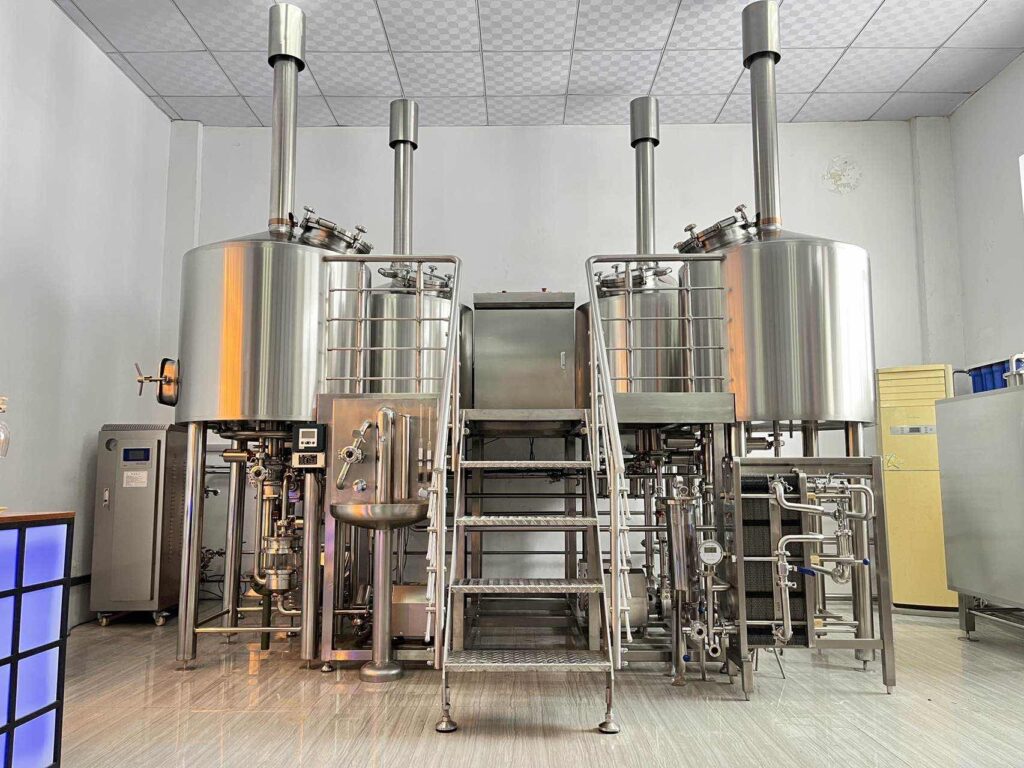
Summary: The MICET design scheme is complete and perfect configuration, with high advancement and stability, and can realize continuous mashing production (one batch of wort every 3 hours).
For More Information
For more information you can visit the MICET Group website:
Advertisement
This article was written as a paid advertisement by the MICET Group. Written by them and to be published on The Beer Thrillers. They have paid for this publication space.

Thanks For Reading
As always, thank you everyone for reading! Leave your likes, comments, suggestions, questions, etc, in the comments section. Or use the Feedback – Contact Us – page, and we’ll get right back to you! You can also reach out to us at our direct e-mail address: thebeerthrillers@gmail.com
Thank you for visiting our blog. Please make sure to follow, bookmark, subscribe, and make sure to comment and leave feedback and like the blog posts you read. It will help us to better tailor the blog to you, the readers, likes and make this a better blog for everyone.
You can check out our different directories here: Beer Reviews, Hike Reviews, Book Reviews, Brewery News, Brewery Openings, Brewer Interviews, and Travelogues.
Please be sure to follow us on our social media accounts – Facebook, Facebook Group, Twitter, Instagram, YouTube, and Influence. Please be sure to also follow, like, subscribe to the blog here itself to keep updated. We love to hear from you guys, so be sure to leave a comment and let us know what you think!
You can now find us on our Discord Server here: The Beer Thrillers (Discord Server). We’ve also joined LinkTree to keep track of all of our social media pages, as well as hot new articles we’ve written.
The Beer Thrillers are a blog that prides itself on writing beer reviews, brewery reviews, travelogues, news (especially local to the Central PA brewery scene), as well as covering other topics of our interests – such as hiking, literature and books, board games, and video games which we sometimes stream with our friends over at Knights of Nostalgia. We are currently listed as #7 on FeedSpot’s “Top 100 Beer Blogs” and #9 on FeedSpot’s “Top 40 Pennsylvania Blogs”. Thank you for reading our site today, please subscribe, follow, and bookmark. Please reach out to us if you are interested in working together. If you would like to donate to the blog you can here: Donate to The Beer Thrillers. Thank you!

